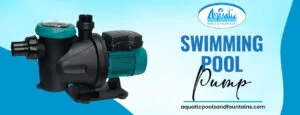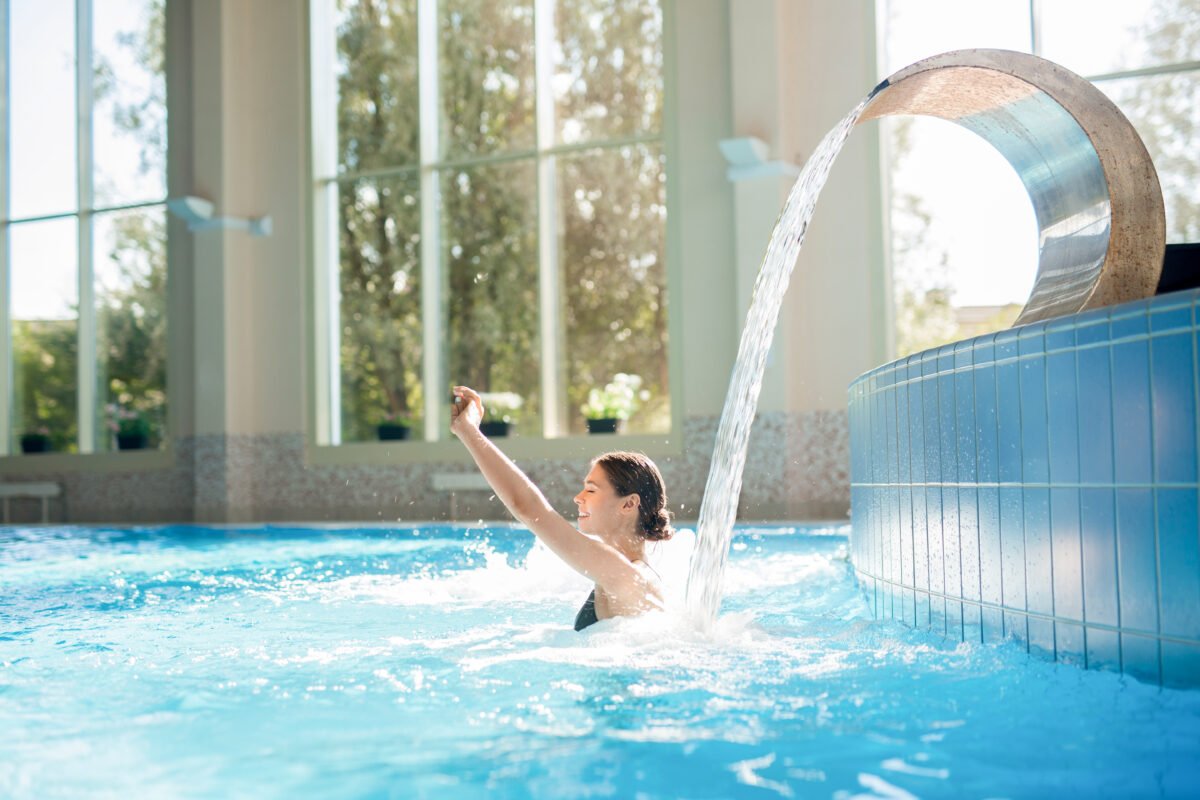Comparing Swimming Pool Pumps: Which Type Is Best for You?
Choosing the right swimming pool pump is pivotal for maintaining a clean, healthy, inviting pool environment. This integral component is the heart of your pool’s circulation system, influencing water quality, energy efficiency, and overall maintenance. Understanding how swimming pool pumps work and their role in maintaining your pool can help you make an informed decision, ensuring your swimming experience is enjoyable and safe.
Swimming pool pumps are designed to circulate water through the pool’s filtration system, removing debris, dirt, and pathogens. This circulation process is critical for maintaining water clarity and hygiene, preventing the stagnation that can lead to algae growth and the proliferation of harmful bacteria. Essentially, the pump pulls water from the pool, pushes it through the filter to remove impurities, and then returns the cleaned water to the pool. This continuous cycle is essential for keeping the pool water in pristine condition.

Understanding Swimming Pool Pumps
The primary function of a swimming pool pump is to ensure the circulation and filtration of pool water. This process is indispensable for maintaining water quality and clarity. By circulating the water, the pump enables the distribution of chemicals throughout the pool, ensuring a uniform chemical balance. This not only aids in keeping the water clean but also helps prevent the buildup of harmful microorganisms and algae. Moreover, filtration ensures that particles and debris are removed from the water, contributing to a cleaner and more inviting pool environment.
Types of Swimming Pool Pumps
- Single-Speed Pumps: These pumps operate constantly, providing a straightforward and cost-effective solution for pool water circulation. However, they are often less energy-efficient compared to other types.
- Dual-Speed Pumps: Dual-Speed pumps offer more flexibility in both high- and low-speed settings. This allows for energy savings during lower-speed operations while still providing higher power options when needed, such as during intensive cleaning cycles.
- Variable-speed pumps are the most energy-efficient and flexible options available. They can operate at a wide range of speeds, allowing for precise control over water flow and energy consumption. They can also be adjusted to the pool’s needs, optimizing energy use and minimizing costs.
Factors to Consider When Choosing a Pool Pump
When selecting a pool pump, several crucial factors must be considered to ensure optimal performance, energy efficiency, and cost-effectiveness. Understanding these elements can lead to a more informed decision that suits your pool’s needs.
Pool Size and Volume
- Calculating your pool’s volume is the first step toward selecting the right pump size. The volume, usually measured in gallons or liters, dictates the pump’s capacity to circulate and filter all the water efficiently within a certain timeframe.
- Pump size requirements vary by pool size, with larger pools requiring pumps with higher flow rates to circulate water effectively. Choosing a pump that can cycle all the pool water within 8 to 12 hours is vital.
Energy Efficiency
- A comparison of energy consumption between pump types reveals that variable-speed pumps are generally more energy-efficient than single—and dual-speed pumps due to their adjustable flow rates.
- Energy-efficient pumps can have significant long-term savings potential as they consume less power, leading to lower utility bills.
Noise Level
- Discussion of the noise output of different pump types shows that variable-speed pumps operate more quietly than their single—or dual-speed counterparts, especially at lower speeds.
- The importance of noise consideration for residential areas cannot be overstated, as a quieter pump enhances the overall pool experience and avoids disturbing neighbors.
Maintenance and Durability
- The expected lifespan of each pump type varies, with variable-speed pumps often offering longer service life due to less wear on their components.
- Maintenance requirements and ease of repair differ among pump types, with simpler models generally being easier to maintain but possibly requiring more frequent repairs.
Cost
- Initial cost comparison indicates that variable-speed pumps are more expensive upfront but can offer savings over time through lower operational costs.
- Long-term cost-effectiveness is critical, as investing in a more efficient, durable pump can reduce overall expenses associated with maintenance, repairs, and energy consumption.
Detailed Comparison of Swimming Pool Pump Types
Single-Speed Pumps
- Pros and cons: These pumps are affordable and straightforward but lack energy efficiency and flexibility.
- Best use cases: Small to medium-sized pools with less frequent usage.
- Overall efficiency and cost implications: High operational costs due to constant high-speed operation.
Dual-Speed Pumps
- Pros and cons: It offers some energy savings with low—and high-speed settings, but it is still limited compared to variable-speed models.
- Best use cases: Pools that require occasional high-speed filtration or cleaning.
- Comparison with single-speed: Improved flexibility and potential for energy savings, but with a higher initial cost.
Variable-Speed Pumps
- Pros and cons: High upfront cost but significant long-term savings through unparalleled energy efficiency and programmability.
- Best use cases: All pool types, especially those used frequently or with varying needs.
- Analysis of energy savings, programmability, and upfront costs: The most cost-effective option over time, with customizable settings to match specific pool requirements, leading to optimal energy use and lower utility bills.
Additional Considerations
Legal and Regulatory Compliance
When selecting a pool pump, it’s crucial to consider the legal and regulatory landscape, as it can significantly influence the decision-making process. For instance, several states in the U.S. have enacted legislation requiring energy-efficient pool pumps to conserve energy and reduce environmental impact. These regulations are not just limited to new installations but can also affect replacements and upgrades. Compliance with these laws ensures legal operation and can qualify the homeowner for rebates and incentives designed to offset the initial investment costs.
Environmental Impact
The shift towards energy-efficient pumps is driven by more than just compliance with legal standards; it’s also a step toward reducing the environmental footprint of pool maintenance. Energy-efficient pumps operate with less energy consumption, significantly reducing carbon emissions over their lifespan. Moreover, these pumps often have advanced features like variable speed settings, allowing for more precise control over filtration processes, enhancing their energy-saving potential, and minimizing chemical usage in pools. This sustainable approach aligns with growing environmental concerns and the global push for greener technologies.
Installation and Compatibility
Installing a new pump in an existing pool system presents its own set of challenges. It’s vital to consider the compatibility of the new pump with the existing pool filters and other equipment. The hydraulic characteristics of the pump should match the pool’s requirements to avoid inefficiencies or potential damage. Consulting with a professional can ensure that the pump’s flow rate and head loss are appropriate for the pool’s size and the filtration system’s demands. Additionally, the new pump’s physical dimensions and electrical requirements must be compatible with the existing setup to avoid extensive modifications.
Choosing the Right Pump for Your Pool
Scenario Analysis
Choosing the right pump can depend heavily on specific pool characteristics and owner preferences. For instance, a large, frequently used community pool might benefit most from a variable-speed pump, which offers the flexibility to adjust the flow rate according to usage patterns, thereby optimizing energy use and minimizing costs. Conversely, a small, private pool that sees less frequent use might be adequately served by a single-speed pump, providing a more cost-effective solution upfront.
Expert Recommendations
Pool maintenance professionals and manufacturers often emphasize the importance of considering the pool’s size, usage patterns, and the local climate when selecting a pump. They recommend energy-efficient models, especially variable-speed pumps, for their long-term savings and environmental benefits. Moreover, seeking advice from a professional can help navigate the complexities of compatibility and regulatory compliance, ensuring that the chosen pump meets all needs and requirements.
Cost-Benefit Analysis
The initial cost of energy-efficient pumps, particularly variable-speed models, can be higher than that of their less efficient counterparts. However, a simplified cost-benefit analysis often reveals that the energy savings achieved over the pump’s lifetime can offset the initial investment. Homeowners should consider the reduced operational costs, potential rebates, and environmental benefits when making decisions. This analysis can aid in making an informed choice that balances upfront costs with long-term savings and sustainability objectives.
Future Trends in Swimming Pool Pumps
As the demand for more efficient and environmentally friendly solutions continues to rise, the swimming pool industry is witnessing technological advancements in pool pumps. These advancements aim to enhance energy efficiency, reduce maintenance costs, and minimize environmental impact.
If you are looking for “swimming pool pump near me” in Dubai, visit our online store at Aquatic Pools & Fountains LLC!
Technological Advances
The future of swimming pool pumps lies in integrating smart technologies and renewable energy sources. Smart pumps with sensors and connectivity features enable remote monitoring and control, optimizing pump performance and energy consumption. These pumps can automatically adjust their speed and flow rates based on real-time data, ensuring optimal efficiency and minimal energy wastage.
Furthermore, solar-powered pool pumps are gaining traction as a sustainable alternative to traditional electric pumps. Harnessing the sun’s power, these pumps utilize photovoltaic panels to generate electricity, reducing reliance on grid power and lowering operational costs. With advancements in solar technology, such as improved efficiency and affordability, solar-powered pool pumps are expected to become more prevalent, offering an eco-friendly solution for pool owners.
Market Trends
Various factors, including technological innovation, environmental awareness, and consumer preferences, will influence the future popularity of different pump types. Smart pumps are anticipated to experience significant growth as homeowners increasingly prioritize convenience and energy savings. The ability to remotely monitor and control pump operations via mobile devices appeals to modern lifestyles, driving demand for smart pump solutions.
Similarly, solar-powered pool pumps are expected to gain momentum as environmental sustainability becomes a primary consideration for consumers. With advancements in solar panel efficiency and cost-effectiveness, more pool owners will likely invest in renewable energy solutions to power their pools. Additionally, government incentives and rebates for renewable energy installations may further incentivize the adoption of solar-powered pumps.


